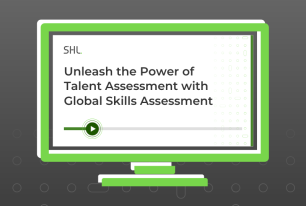Are Your Competencies Fit for an Unpredictable World?
Would your current behavioral framework stand the test of time? Is it time to redefine and embed what is at the heart of your talent strategy?
Share
Are your competencies fit for a new world? In a world of constant change, it is difficult to keep up. The VUCA world required us to be adaptable, responsive, and entrepreneurial, and to adopt a growth mindset to cope with constant change. However, the pandemic created a totally new scenario–we were thrust into a world where VUCA seemed inadequate–we needed a new way to describe our experience, hence “the BANI world” become the new reality (Brittle, Anxious, Non-Linear, and Incomprehensible).
Having the right behaviors in place in our new world is critical. We have recently experienced the Great Resignation and coupled with a growing skills shortage, attracting and retaining the right talent is at the top of every HRD’s agenda. Embedding the right behaviors in the talent acquisition strategy and conveying an accurate picture of the culture through a clear employee value proposition becomes critical.
How is leadership evolving?
In this uncertain world, each sector, industry, and function is required to reinvent itself to achieve maximum growth and sustainability and at the same time protect margin. New behaviors for leaders and employees will need to be defined to drive forward the new strategy and enable success. How do leaders achieve the balance between the need to scan the horizon to keep ahead of future competition, with the need to drive operational efficiencies today? At the same time, new demands are being made of those in people management roles specifically. People leaders are required to establish a different psychological contract with their teams as they learn to operate in a hybrid world–empathy, humility, self-awareness, and agility have a stronger focus. Given these significant shifts its stands to reason that current behavioral frameworks may need a makeover. If we put our pre-pandemic ways of working under the microscope we may well see that it is time to dust off our old competencies and revitalize them.
We have recently experienced the Great Resignation and coupled with a growing skills shortage, attracting and retaining the right talent is at the top of every HRD’s agenda.
How do we make sure behavioral frameworks get used?
If you decide to refresh or design a new behavioral framework, it is important to make sure that your efforts pay off. All too often leadership frameworks are left on the shelf to gather dust. However, the value of the framework is determined not so much in the design but in the embedding into the HR talent framework. Here are some tips to ensure it is brought to life:
- Make sure the framework is linked to your medium to long-term vision. A new competency framework is an excellent way to drive the behaviors needed to make your business a success. Capturing the inputs of your CEO through a visionary discussion is the first critical step to ensure that your output is “future-proofed” and that you have the necessary buy-in for success.
- Use the job analysis phase to gain the input or buy-in of influential stakeholders. Identify and involve the “Mavens” (ref Malcolm Gladwell Tipping Point) who have disproportionate influence among peers at key points. On the other hand, do not forget to involve your end-users; gaining the input of a representative sample of employees also ensures that you capture a diverse range of behaviors–and these people are just as critical to the framework’s success.
- Identify the most important talent initiatives and embed your framework in these first. Whilst a big-bang approach to landing a competency framework may seem a worthwhile idea, new behaviors only come to life when seen in action. Consider where the framework will have the most impact on your talent processes. Is it in the recruitment of a critical population of talent or the development of your leaders?
- Choose a low-stakes talent initiative to socialize the new framework. Implementing new behaviors in your performance management process linked to pay at the outset may lead to skepticism or even rejection. On the other hand, building into a development initiative, such as a 360-degree feedback program, where leaders get the opportunity to self-assess as well as receive feedback from others may be a softer introduction.
So, it is time to put your current framework against the mirror and consider whether it is driving the outputs you need as a business. Is there a gap where it could be better embedded in your talent processes—attraction and recruitment, onboarding, development, or succession?
If you want to bring your competency framework to life through a review or refresh or embed it in your HR initiatives check out our talent solutions or contact your SHL representative.









